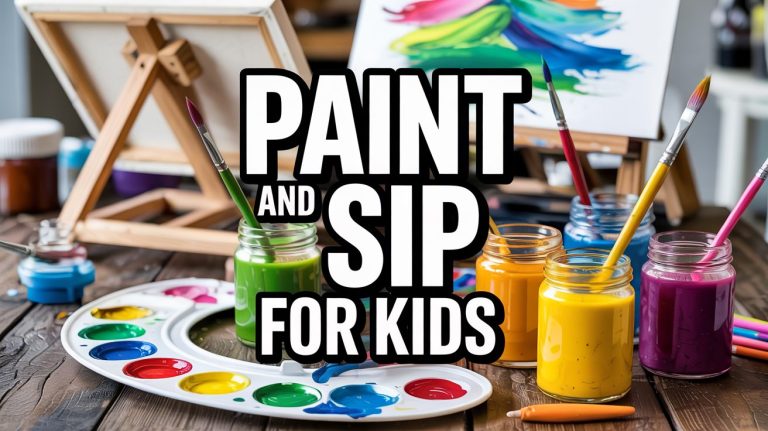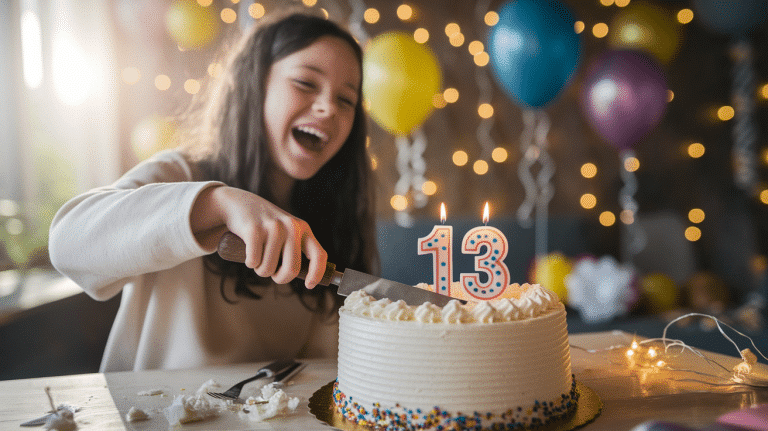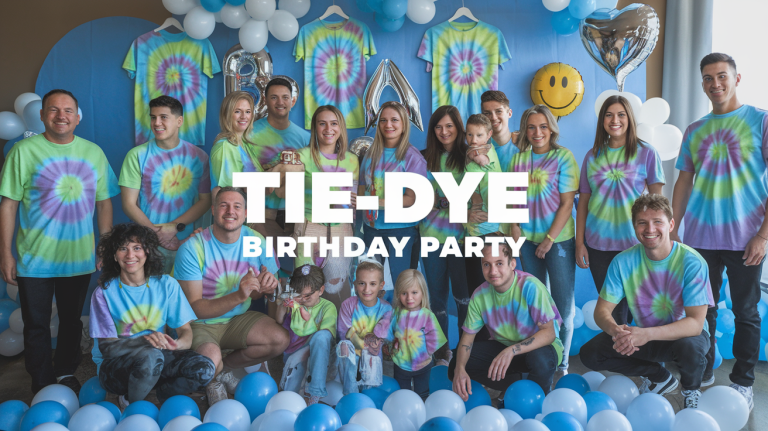Paint and sip events bring people together to create art while sipping on beverages.
What started as an adult-oriented activity with wine has been reimagined for youngsters, replacing alcohol with child-friendly options like juice, smoothies, and colorful mocktails.
These artistic gatherings have quickly become go-to choices for birthday celebrations, playdates, and school events.
Parents appreciate how these sessions blend fun with learning, while children enjoy the chance to express themselves through painting.
The format offers a welcome change from typical kid activities, combining creativity, social interaction, and skill development in a relaxed, enjoyable setting.
What is a Paint and Sip for Kids?

A paint and sip event for children adapts the grown-up concept to meet the needs of young artists.
These events feature age-appropriate materials like child-safe paints, smaller brushes, and sturdy canvases that can withstand enthusiastic painting.
Instructions are simplified with clear, step-by-step guidance and fewer complicated techniques to follow.
Instead of wine, kids enjoy fruit juices, smoothies, and fun mocktails, typically served in spill-resistant containers to prevent messes. Sessions are shorter, usually 60-90 minutes, to match children’s attention spans.
Parents and teachers value these events because they combine creative learning with social enjoyment.
While adult sessions might teach complex shading or perspective, children’s paint and sip events prioritize fun and self-expression, helping participants build confidence in their artistic abilities.
How to Host a Paint and Sip Party for Kids: Step-by-Step Guide
Creating a memorable art event for children requires thoughtful preparation but yields wonderful results.
Step 1: Select an appropriate painting concept
- Choose subjects that match the participants’ ages and interests—perhaps animals, landscapes, or favorite cartoon characters
- Consider seasonal themes like beach scenes for summer or snowmen for winter events
- Look for designs with clear shapes and limited detail for younger groups
- For older children, find paintings with 3-5 main elements that can be completed within your timeframe
- Print color samples or find example images to show children what they’ll be creating
Step 2: Collect necessary supplies
- Purchase child-safe paints, various brush sizes, protective coverings for clothes, and canvases or heavy paper
- Opt for washable tempera or acrylic paints in squeeze bottles for easier handling
- Include at least three brush sizes: large for backgrounds, medium for main shapes, and small for details
- Stock up on paper towels, water cups, mixing trays, and pencils for initial sketching
- Have spare supplies on hand for accidents or unexpected guests
Step 3: Create a beverage station
- Offer colorful juices, fruit smoothies, or special non-alcoholic concoctions in fun cups with decorative straws
- Consider a “mix your own” station where children can combine fruit juices with sparkling water
- Use spill-proof cups with lids and straws for younger participants
- Add fun garnishes like fruit slices or tiny paper umbrellas to make drinks feel special
- Keep beverages in a separate area from the painting supplies to prevent accidental dipping of brushes
Step 4: Plan the painting process
- Decide if you’ll lead the session yourself with simple instructions or hire an art teacher who specializes in children’s programs
- If leading yourself, break the painting into 4-6 clear steps and practice beforehand
- Prepare a finished example and one in-progress example to show different stages
- Consider creating short, written instructions with simple illustrations for older children to reference
- Plan a 5-minute warm-up activity like practicing brush strokes on scrap paper to help children get comfortable.
Benefits of Paint and Sip Events for Kids
Paint and sip events provide children with much more than just a fun afternoon. They offer a range of developmental benefits that support growth across multiple areas.
Key Benefits for Young Artists:
-
Skill Development: Children develop artistic skills by mixing colors and trying different brush techniques in a supportive group setting.
-
Motor Coordination: These activities help improve fine motor control and hand-eye coordination as kids carefully apply paint to canvas.
-
Social Connection: The social aspect of creating art together builds connections between children while providing a welcome break from screens and digital entertainment.
-
Inclusive Environment: Both outgoing and quieter children benefit from this format, as it allows for individual work within a shared experience.
-
Confidence Building: Completing a painting gives children a sense of accomplishment and builds their creative confidence.
These combined benefits make paint and sip events an excellent choice for parents seeking activities that are both enjoyable and enriching for their children.
Paint and Sip Party Ideas for Kids by Age Group
Choosing the right painting projects is essential for keeping children engaged and setting them up for success. The perfect activity varies significantly based on the age and development stage of your young artists.
Toddlers (3–5 years): Focus on sensory experiences with finger paints and basic forms. Simple subjects like rainbows, flowers, or handprint art work beautifully for this age group.
Kids (6–9 years): Introduce more structured projects featuring familiar subjects such as pets, trees, or simple landscapes. Basic color mixing and brush techniques can be taught at this stage.
Tweens (10–12 years): Offer more complex projects like space scenes, abstract designs, or simplified portraiture. This age group can follow multi-step instructions and appreciates learning real art techniques.
Matching the complexity of projects to children’s abilities ensures everyone feels successful and proud of their finished artwork, making the experience positive for all participants.
Tips for a Successful Paint and Sip for Kids
Creating a positive artistic experience requires thoughtful planning beyond just the painting itself. Here are proven strategies to ensure your event is both enjoyable and stress-free:
Timing and Pacing
- Keep sessions between 60-90 minutes to match children’s attention spans
- Break the painting into clear stages with short breaks between steps
- Allow extra time for younger children who may need more assistance
Setup and Materials
- Use washable, non-toxic paints and markers that clean up easily
- Cover all surfaces with plastic tablecloths or old sheets
- Provide aprons or oversized t-shirts to protect clothing
- Pre-pour small amounts of paint to prevent spills from full bottles
- Have wet wipes readily available for quick cleanup
Creating the Right Atmosphere
- Play upbeat, child-friendly background music
- Offer simple snacks that aren’t messy (avoid sticky or crumbly foods)
- Take photos of children with their artwork for parents to keep
- Display finished paintings in a mini “art gallery” at the end
Guiding the Experience
- Demonstrate techniques before children try them
- Emphasize that every painting will look different—and that’s good!
- Offer gentle guidance without taking over children’s creative choices
- Prepare simple fixes for common mistakes to prevent frustration
With these preparations in place, your paint and sip event will create happy memories and beautiful artwork for everyone involved.
Final Thoughts
Paint and sip parties for children combine artistic growth with meaningful social experiences in a way few other activities can match.
These sessions create a pressure-free space where young artists can try new techniques, mix colors, and express their ideas freely.
The joy visible on children’s faces when they complete their paintings makes all the preparation worthwhile. Each child walks away with not just a finished artwork, but also boosted confidence and happy memories.
No matter you host at home for a birthday, arrange as a special playdate, or attend as a community class, these creative gatherings plant seeds of artistic appreciation that can grow throughout childhood.
The combination of creativity, refreshments, and friendship makes for an experience both parents and children will want to repeat.














